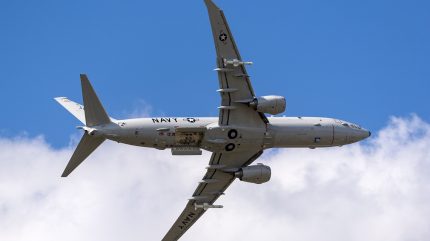
A US Navy P-8A Poseidon’s recent transit of the Taiwan Strait has sent a message throughout the region as geopolitical tensions continue to simmer in the Indo-Pacific.
While the US Navy asserts its commitment to upholding navigational rights, China could see the move as a provocative gesture that could exacerbate strained relations.

Discover B2B Marketing That Performs
Combine business intelligence and editorial excellence to reach engaged professionals across 36 leading media platforms.
The level of threat to Taiwan has amplified in recent years, with the People’s Liberation Army (PLA) frequently violating the median line by conducting military drills near the Taiwan Strait. This can be seen as an effort to coerce Taiwan into towing Beijing’s line, according to GlobalData’s “Taiwan Defense Market 2023-2028” report.
The US Navy aircraft navigated through international airspace within the Taiwan Strait on April 17, 2024, local time. However, the implications of this manoeuvre extend far beyond a routine transit, as it occurred amid heightened tensions in the region.
The transit, conducted in accordance with international law, is framed by the United States as a demonstration of its commitment to a free and open Indo-Pacific. Yet, the timing and context of the move cannot be overlooked, occurring, as it does, against the backdrop of escalating geopolitical rivalries and increased military posturing.
In recent years, multiple US Navy vessels, including the USS Curtis Wilbur, USS John Finn, USS Sampson, USS Antietam, USS Chancellorsville, USS Chung-Hoon, and USS Rafael Peralta, alongside the Royal Canadian Navy’s HMCS Ottawa, have conducted routine transits through the Taiwan Strait in a series of coordinated manoeuvres.

US Tariffs are shifting - will you react or anticipate?
Don’t let policy changes catch you off guard. Stay proactive with real-time data and expert analysis.
By GlobalDataMeanwhile, the United States emphasises its adherence to international law and the protection of navigational rights. The transit risks further inflaming tensions between Washington and Beijing, adding another layer of complexity to an already volatile geopolitical landscape.
Moreover, the US Navy’s assertion that it “flies, sails, and operates anywhere international law allows” shows the broader competition in the Indo-Pacific. With competing territorial claims and overlapping spheres of influence, the region remains a hotspot for geopolitical competition.



